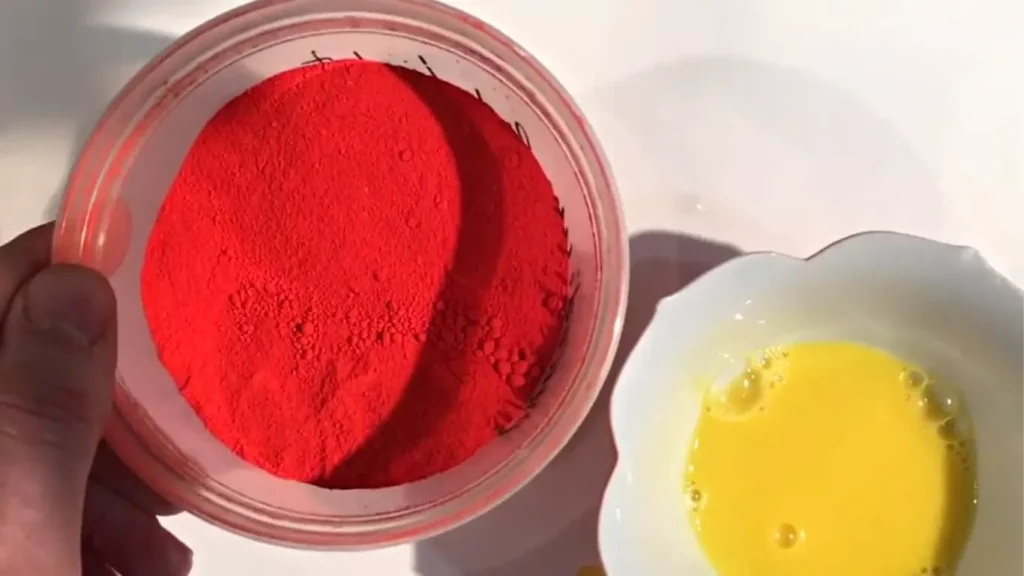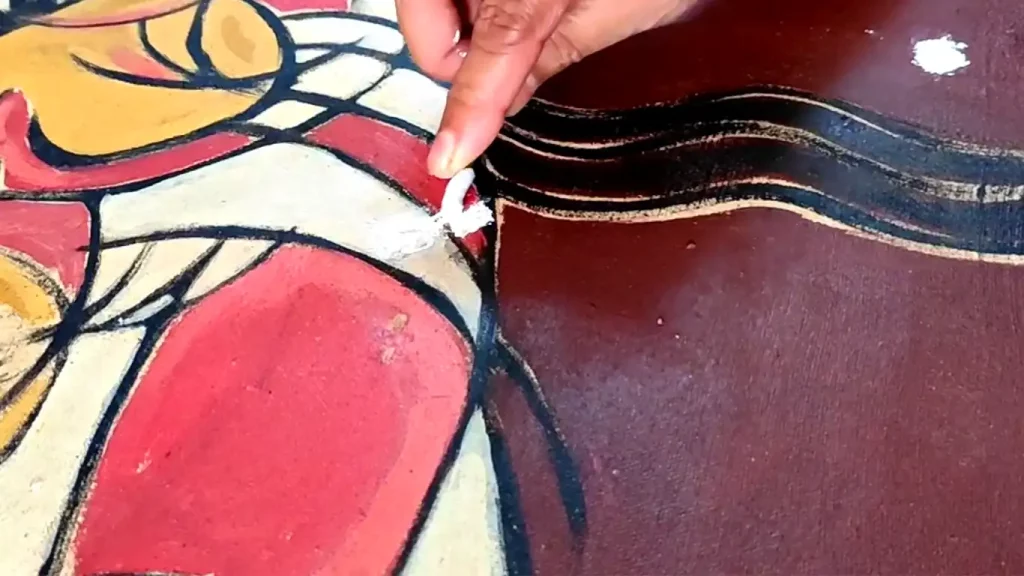Egg tempera paintings are some of the oldest and most revered works of art in existence. But as with any artist’s work, it needs to be properly cared for to ensure its longevity.
One common question is, do egg tempera paintings yellow with age? The answer depends on a few factors, including the pigments used, the quality of materials and tools used, and how well the painting has been preserved over time.
The tempera paint that you see in most paint shops is different from egg tempera paint. Craft tempera paint is non-toxic, non-permanent paint. You can make the paint permanent and turn it into acrylic paint. But in this article, we are not talking about egg tempera paint, not about craft tempera paint or poster paint.

Egg tempera is a centuries-old painting technique that uses egg yolk as a binding agent. It is known for its luminous colors and durability. But how does it fare over time? Does it yellow with age or stay vibrant? Let’s explore the answers to these questions in more detail.
Does Egg Tempera Paint Yellow With Age?
The short answer is yes, egg tempera paintings can yellow with age. This yellowing can be caused by exposure to sunlight, heat, and other environmental elements.
Also, some pigments used in the making of these paints are prone to oxidation, which further contributes to their discoloration over time. Obviously, there are specific actions you can take to prevent this from happening, which will be discussed later in the article.
The Cause of Yellowness in Egg Tempera Paintings
The Pigment Used:
One factor that affects whether or not an egg tempera painting will turn yellow with age is the type of pigment used in its creation. Pigments such as cadmium yellow (cadmium sulfide) and chrome yellow (lead chromate) can become darker or turn brownish-yellow when exposed to oxygen.

Conversely, some pigments, such as ochre (iron oxide), can actually lighten with age if exposed to oxygen or UV rays from sunlight.
Quality of Materials Used:
Another important factor is the quality of materials used in creating an egg tempera painting; poor-quality materials will deteriorate more quickly than higher-quality ones.
For example, cheap paints may contain fillers such as chalk or sand that can cause discoloration over time due to oxidation or exposure to moisture or light. In addition, impurities in the raw materials used can also accelerate the deterioration and yellowing of a painting.
How To Preserve Your Egg Tempera Painting?
- The best way to care for your egg tempera painting is by keeping it out of direct sunlight and away from moisture and heat. You should also avoid displaying your painting in areas with high levels of humidity or dust particles.
- If you do decide to hang your painting in an area with direct sunlight, be sure to use UV-blocking glass or acrylic sheeting over the frame. You should also make sure that your artwork is displayed at an appropriate temperature (ideally between 60-70°F) and humidity level (between 50-60%).
- Also, you should periodically inspect your painting for any signs of damage, such as cracking and flaking paint and take steps to repair them if necessary.
- Another way to extend the life of your egg tempera painting involves using conservation-quality materials for framing and display purposes. For example, use acid-free backing boards and mats when framing your painting. As a result, your artwork will be exposed to fewer airborne pollutants over time.
- Consider using archival-grade adhesive for mounting or attaching objects onto the surface of your painting. This will help ensure that no damage is done during the process.
What Can Be Done to Restore a Yellowed Egg Tempera Painting?
1) Clean the Surface:
The first step in restoring an old egg tempera painting is to clean the surface with a soft, lint-free cloth and water. Be sure not to use any harsh chemicals or abrasive materials that could erode the paint layer.
2) Re-prime:
If the painting has already been primed, you may need to re-prime it in order to restore its original vibrancy. Use a high-quality gesso (a type of primer) made specifically for egg tempera paintings and apply it in thin layers until the surface is fully covered.
3) Apply Retouch Varnish:
Once the painting is dry and free of dust and debris, apply a retouch varnish (also known as a final varnish) using a brush or sprayer. This will help protect the paint layer from further damage caused by environmental factors such as UV light and humidity.

4) Restore Color & Tone:
Use watercolors or oil paints (depending on what was originally used on your painting) to carefully restore any areas of color or tone that have faded over time.
Remember, when doing a restoration on an egg tempera painting, it’s best not to be too heavy-handed. Make sure that you keep your brush strokes light and gentle so as not to damage the paint layer further.

Can Egg Tempera Paint be Made Permanent?
Fortunately for art lovers everywhere, Egg Tempera can be made more permanent with the proper care and storage measures. By increasing the amount of beeswax or gum arabic in the tempera mixture when applied, then using ultraviolet filters to protect paintings that have been completed and framed, an Egg Tempera painting can become much less susceptible to external factors such as dust and extreme temperatures.
With these measures in hand, collectors and admirers can rest assured knowing their precious egg tempera pieces will stand the test of time.
Conclusion:
In conclusion, yes—egg tempera paintings can turn yellow with age due to exposure to environmental elements such as sunlight and heat, as well as pigments used in the paint itself are prone to oxidation. But, there are several steps that you can take in order to ensure that your egg tempera painting stays vibrant for years on end.
Be sure to opt for conservation-quality materials when framing/displaying, periodically inspect for signs of damage, and use archival-grade adhesives when mounting/attaching items onto its surface. Thanks for reading.

S. Pushon is a paint expert, self-taught artist, and currently working as an adviser in the paint industry as a Quality Improvement and Development Assistant.
An artist by heart, he draws remarkable art pieces and as a professional paint industry individual, he seeks the insight and shares with enthusiasts. Read more…

